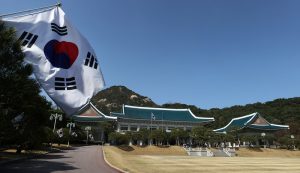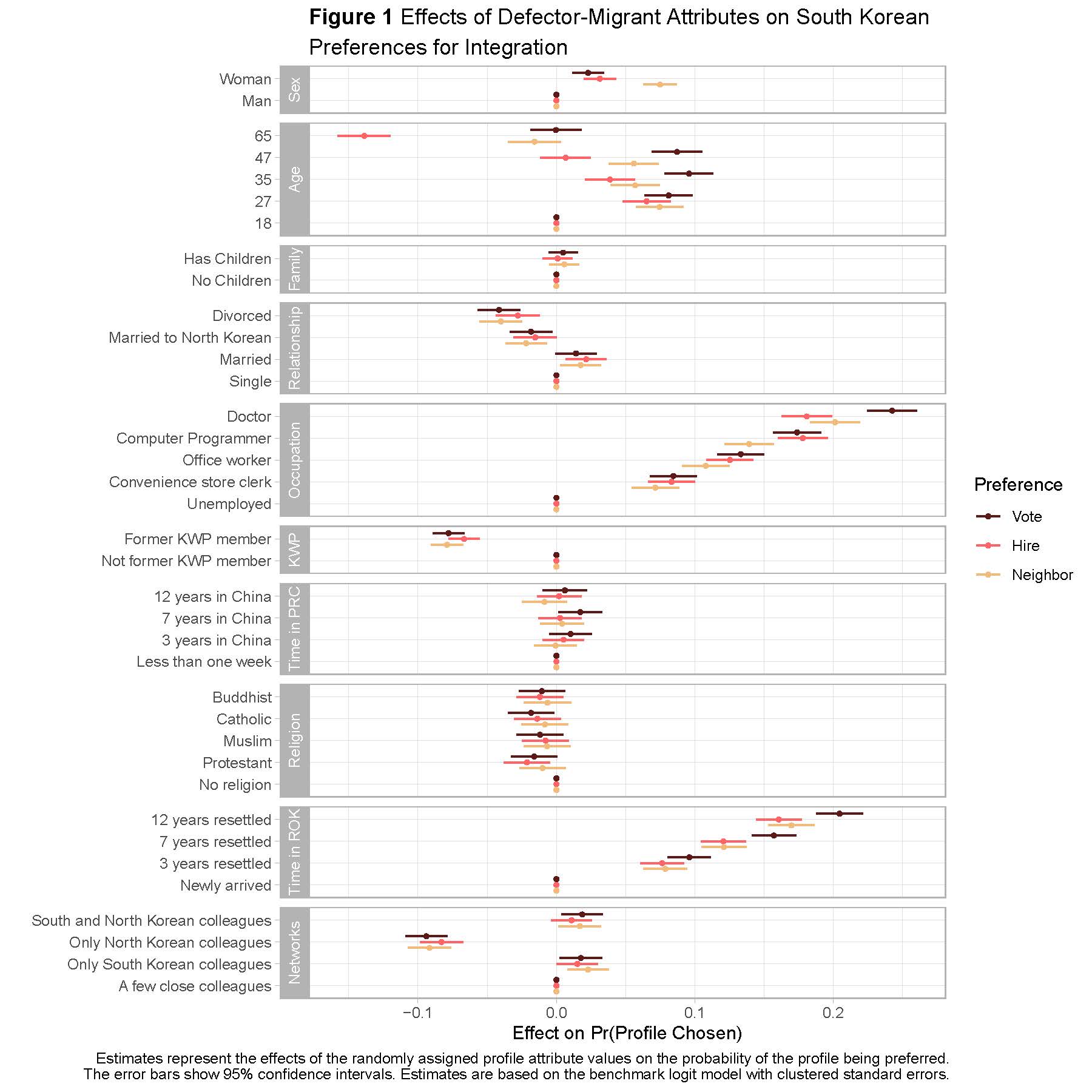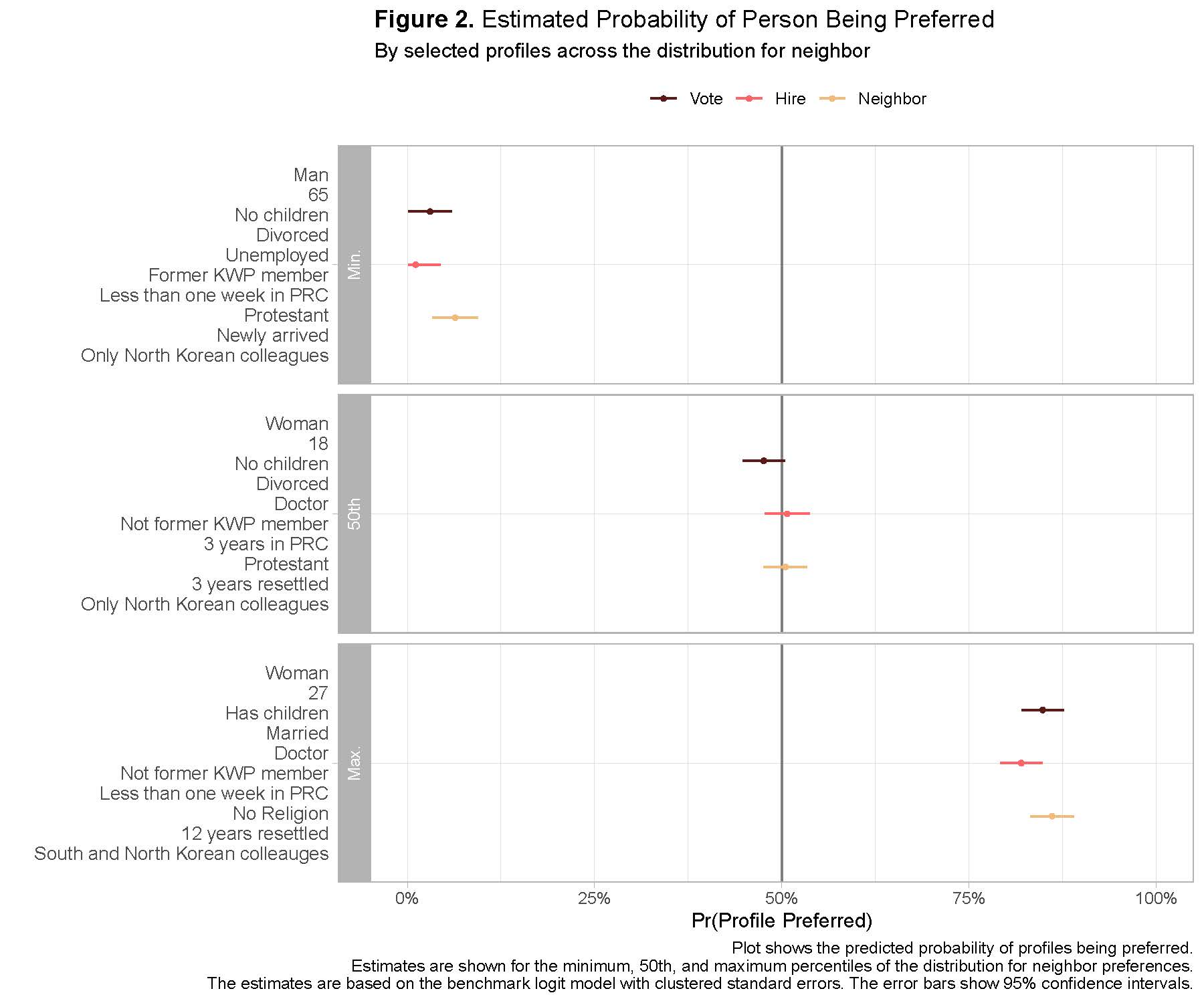Improving North Korean Defector Integration in South Korea: Survey Findings and Recommendations

It is Seoul’s responsibility to promote and ensure the integration of just under 34,000 resettled defector-migrant North Koreans into the Republic of Korea’s (ROK or South Korea) national fabric, but it is not always easy to say what this looks like in practice. When defector-migrants experience second-rate treatment in society, the challenge to integration is clear. But subtle or less explicit forms of rejection, such as welfare chauvinism, are hard to measure and even harder to address. In South Korean media, the challenges that defectors face are all too often highlighted, with limited space dedicated to featuring the success stories that also exist.
We know from prior research that South Korean attitudes towards migrants generally are largely conditional on attributes of the migrants themselves. North Korean arrivals have some particularly favorable characteristics. But those North Korean arrivals are also not a homogenous group. What, then, determines the integration of co-ethnic migrants from North Korea into the South? The answer is that nobody is really sure.
Therefore, we sought to fill in some of the knowledge gaps by conducting a survey experiment that explores the determinants of integration of defector-migrants once they resettle. We measure the substantive political, economic and social integration of North Korean defector-migrants by looking at South Koreans’ preferences at the ballot box, places of employment and in neighborhoods. As a result, we were able to identify the factors that motivate South Koreans to accept North Korean defector-migrants into the national community.
South Korea’s Migrant Preferences Explained
It is common for societies to harbor collective preferences for different groups of migrants over others. These preferences may derive from deep historical-social or political ties or from something as simple and crude as racism. In any event, when a society reserves the right to choose whom to allow in, migration becomes a matter of lively debate.
In the ROK, this particular conversation has been a controversial one for some years. For example, in 2018, a group of around 550 Yemeni war refugees arrived on South Korea’s southern island of Jeju by utilizing cheap AirAsia flights and a visa-free route via Kuala Lumpur. The group’s arrival triggered a heated political battle over how and under what conditions to integrate some or all of them into South Korean society. In the autumn of 2021, protests against the construction of a mosque in the country’s third-largest city of Daegu occurred, with those in opposition fearful that it would usher in a stronger Islamic influence. Most recently, in Ulsan, a vocal minority of local residents protested the children of a group of Afghani “special contributors” who worked for South Korea in Afghanistan prior to the fall of Kabul, being granted entry into the area’s schools.
There are plenty of documented cases of discrimination against resettled North Koreans, too. However, comparisons end there, since the situation for North Koreans is categorically different. First, it has been settled law since 1996 that North Koreans have a birthright to South Korean citizenship.[1] In other words, unlike the case for other migrants of all stripes, South Korea has voluntarily given up the right to determine whether to allow North Koreans in. Therefore, policy instruments can only be used to improve or worsen the chances of successful integration for those who opt to take up that right by escaping from North Korea and following one of several difficult and lengthy routes to the South.
Second, South Koreans have a strong preexisting preference for North Koreans as migrants over people from Yemen or Afghanistan. As discussed in detail in these authors’ 2021 research, two things largely drive attitudes towards immigrants in South Korea: integration cues and a migrant’s origin. Newcomers who seem likely to make an economic contribution while adhering to prevailing identity and cultural norms are preferred. Korean speakers from high-status countries, such as the US, can fulfill both criteria and, as a result, are strongly preferred. Since North Koreans are able to fulfill the second criteria—especially in terms of language competence—they too benefit from these preferences.
From a practical policy perspective, since the ROK has forfeited the right to deny entry to defector-migrants—except those deemed highly likely to be North Korean spies—this is insufficient. It is also important to know what the exact drivers of successful integration of defector-migrants are. Accordingly, for this defector-migrant integration experiment, 2,009 South Koreans were surveyed for their preferences using a choice-based conjoint design. A scenario was sketched out where respondents were asked to choose between two hypothetical defector-migrant profiles. Each profile is composed of nine attributes and various levels. The attributes include: sex; age; whether the individual has children; relationship status; occupation; religion; duration of time spent in China after defection and time since arriving in South Korea; whether the individual has only North Korean colleagues, South Korean colleagues or both; and, finally, whether or not the individual was previously a member of the North Korean ruling Korean Workers’ Party (KWP).
The survey then randomly generates two hypothetical profiles, and respondents are asked to make a choice between them. There are three choices to be made per profile: who the respondent would vote for in a local election, which of the two they would hire and who they would prefer as a neighbor. Each respondent sees eight such pairs of profiles. Using a statistical technique, the resulting data are used to generate a measure of the impact that each value of the attributes have on the probability of a particular profile being chosen over the others in each of the three categories.[2] Figure 1 reports the findings.

The results are clear. Across all three categories—vote, hire and neighbor—a defector-migrant’s years since their resettlement and occupation have the greatest impacts by far on whether they are preferred by South Koreans. In other words, South Koreans look favorably upon North Korean migrants whose characteristics hint at first, integration cues, and second, their potential to contribute to the South Korean economy.
With regards to integration, the clearest cue is length of time spent in South Korea. Relative to newly resettled migrants, there is a steady increase across all three categories. At “3 years resettled,” a migrant is 10 percentage points (pp) more likely to be chosen for voting, and 8pp more likely to be chosen as a new employee or neighbor. By “12 years resettled,” which indicates something closer to being fully resettled, the effects are 20pp for voting, 16pp for hiring and 17pp for being a neighbor.
Conversely, South Koreans view North Korean migrants whose characteristics hint at perceived inadequate integration warily. Along with spending a relatively brief period in South Korea, a sense of “North Korean-ness” makes respondents significantly less likely to choose that profile. If the migrant is known to be a former KWP member, they are 7-8pp less likely to be selected than if they were not. If they are known to have only North Korean colleagues, they are also less preferred.
Alongside subjective assessments of how integrated an individual is, the respondent’s general sense that the migrant would be capable of making a positive economic and cultural impact on South Korea drives selection. Migrants with highly skilled and culturally desirable occupations (e.g., doctor) are greatly preferred as political candidates, new employees and neighbors. Relative to the reference category (“unemployed”), being a doctor means that the migrant is 24pp more likely to garner a vote, 18pp more likely to be hired for a new job and 20pp more likely to be chosen as a neighbor. Simply put: the more skilled the occupation, the more desirable the person.

To present a more substantive and intuitive outcome of the results, Figure 2 shows the predicted probability of a defector-migrant profile being viewed favorably across select percentiles of the distribution for neighbor.[3] The person who is the least likely to be chosen for a neighbor and highly unlikely to be voted for or hired as a new employee is a newly arrived 65-year-old, divorced man with no children. The migrant profile of this type of man, who is also a protestant, a former member of the KWP, spent less than a week in China and only has North Korean colleagues, has only a three percent chance of being voted for, a one percent chance of being hired as a new employee and a six percent chance of being chosen as a neighbor.
On the other end of the distribution, we find a 27-year-old female doctor who is married with children, nonreligious, does not come from a KWP background, has been in South Korea for more than a decade and has a mixture of both South and North Korean colleagues. This profile signals to South Koreans that this type of migrant can integrate (and arguably has), as both integration concerns and broader identity- or norms-based concerns are assuaged. There is an 85 percent probability that this person would be voted for in a local election, an 82 percent chance of being hired and an 86 percent chance of being preferred as a neighbor. Respondents view this type of person as being likely to integrate well as she would quickly acquire the social capital to succeed. A profile at the 50th percentile of the distribution shows a hypothetical profile of a defector-migrant in between the two ends.
Conclusion
Much like attitudes towards (im)migration generally, the integration of co-ethnic migrants from North Korea is conditional on the attributes of the migrants themselves. Those satisfying integration, identity and cultural concerns are more readily accepted by South Koreans as members of the national community. Contrary to research that focuses on persistent discrimination and cases of redefection, what this research demonstrates is that with time, integration is both possible and likely. Defector-migrants, in particular those who demonstrate the ability to work hard alongside South Koreans, will integrate.
Every defector-migrant is different, though, and the challenges of integration are not homogenous. It is, of course, unreasonable to expect every new arrival to be a female doctor, much less to arrive in South Korea at age 27. Self-evidently, it is also impossible to arrive in South Korea for the first time with twelve years of residency already under one’s belt.
And while it may not matter much that an older North Korean migrant would face stark challenges running for political office—People’s Power Party lawmaker Thae Yong-ho is one outlier in this regard—it is notable that they are also less likely to be desired as a neighbor and could struggle to find employment. Based on the characteristics that South Koreans expect from defector-migrants and the reality that not all defector-migrants can meet these expectations, we can say that the challenges are broadly predictable. What can be done about that?
Given that South Korea gave up the right to choose which defector-migrants may enter the country, a one-size-fits-all policy approach can never work. But research on migrant integration shows that resettlement and integration support (e.g., integration courses taught by native instructors) determine success. The South Korean state does indeed provide such services through places like the Settlement Support Center for North Korea Refugees (or Hanawon). But this has its shortcomings, including myopia concerning the possible career pathways that defector-migrants might take. Policy can and should be structured to respond to integration challenges and tailored appropriately. This can be done through existing channels of institutional support, as long as budgets are maintained to leave space to bring this about.
Rather than focus on making budget cuts for resettlement support, the incoming Yoon administration should seize the opportunity, during a time in which relatively few North Koreans are arriving in the ROK annually, to explore tailored solutions that can further improve the integration process.[4]
In the next part of this series, we explore the question of South Korean government support for defector-migrant businesses. Who should be supported, why, and by what means?
- [1]
Page 665 of the linked document (Nationality Act Case, 12-2 KCCR 167, 97Hun-Ka12, August 31, 2000) represents the Supreme Court’s opinion that “North Korea is part of the Korean peninsula and therefore subject to the sovereignty of the Republic of Korea, and therefore that North Korean residency should not interfere with the acquisition of the nationality of the Republic of Korea.” This legal reading accords with the 1948 Constitution of the Republic of Korea.
- [2]
The statistical technique estimates the average marginal component effects (AMCEs) for each attribute level. The effects can be read as causal. Read more about this technique here.
- [3]
We choose to show the estimated probability of preference for neighbor as it is the most likely scenario in which a South Korean would interact substantively with a North Korean resettler. The estimated probabilities for vote choice and hiring preference are not then at the same place on the distribution as they are for neighbor, but given that preferences across the three dimensions co-vary, they are close.
- [4]
Just 229 North Koreans arrived in South Korea in all of 2020, and fewer than one hundred in 2021. It is not clear how many left North Korea during this period. Many are likely to have been in China for some time. Naturally, a certain level of budget reduction is warranted to respond to falling demand; i.e., declining numbers of arrivals.
